The spring solstice has come round again; funny how that happens! However, our nice spring weather in February has deteriorated to a lot of dull squally weather with some very cold nights. This always seems to happen in March.
A Search And Rescue member is supposed to keep up with training courses but due to the covid, we did not have them last year. This spring we have made up for them.
First was the helicopter safety – supposed to be done every year. It was held at White Saddle Air Services at Bluff Lake, south of Tatla Lake. A squally, windy day.
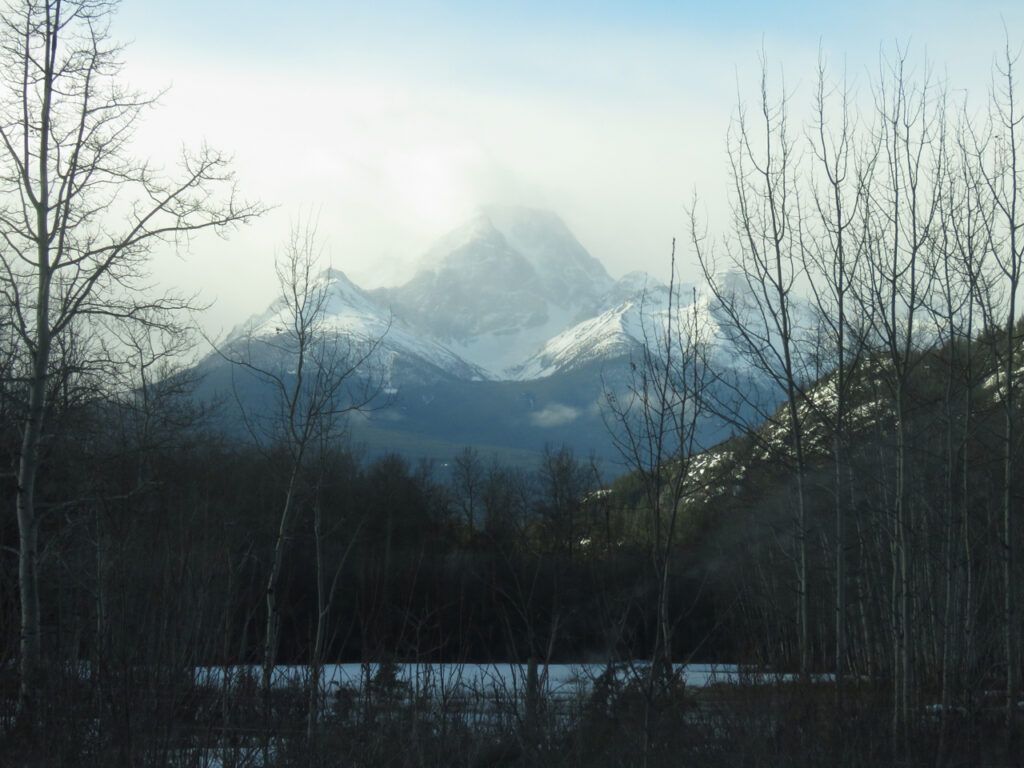
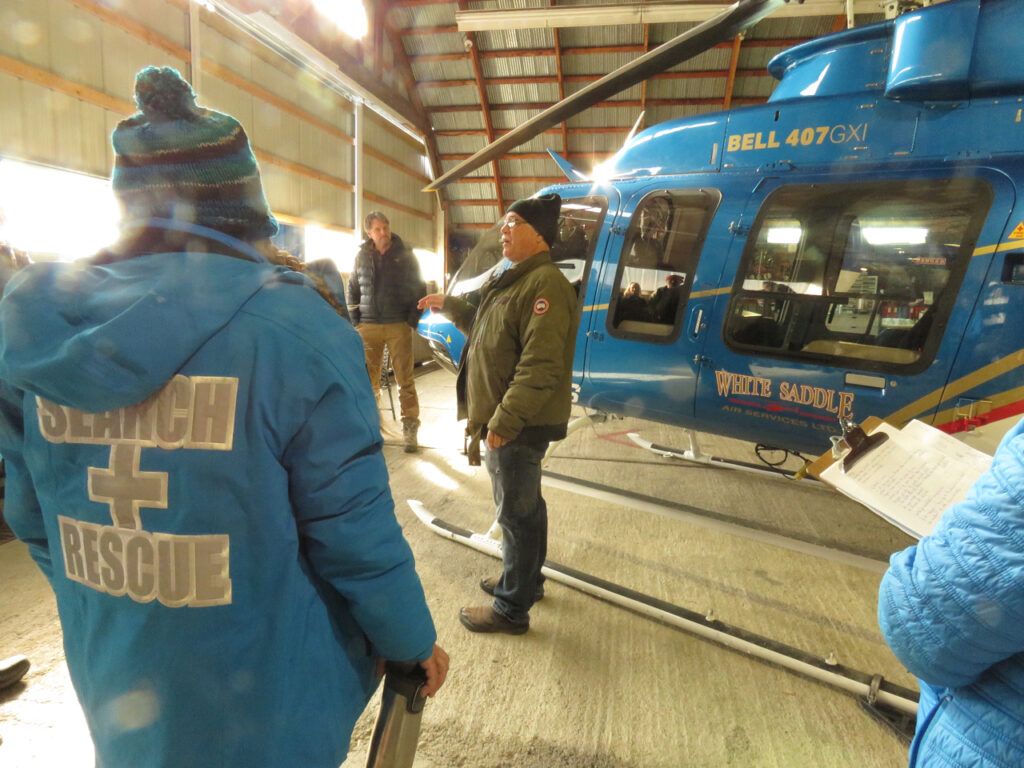
After an hour of being told about the nasty things that could happen to us if we walked into the rotors and such like, the machine was wheeled out and the first group climbed aboard to practice a hover exit. It would actually be very rare for SAR personal to do this, although it is done all the time when firefighting. Off went the first batch.
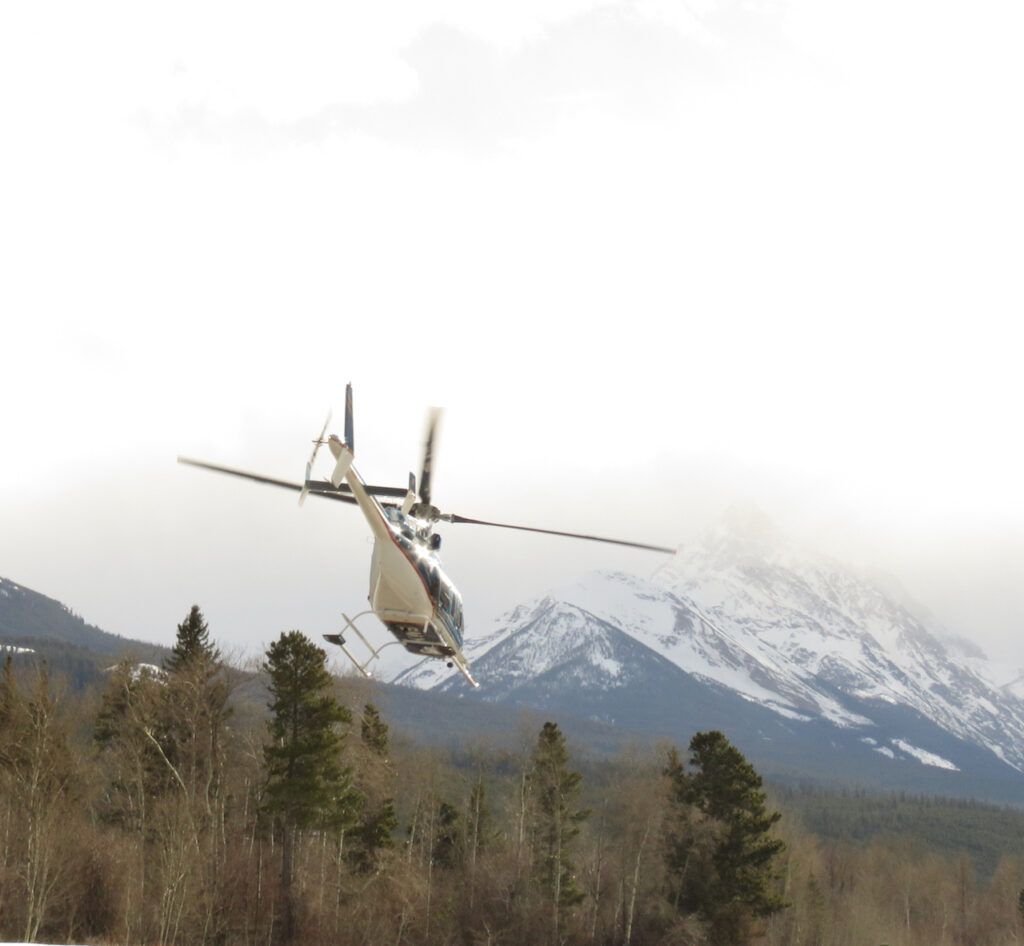
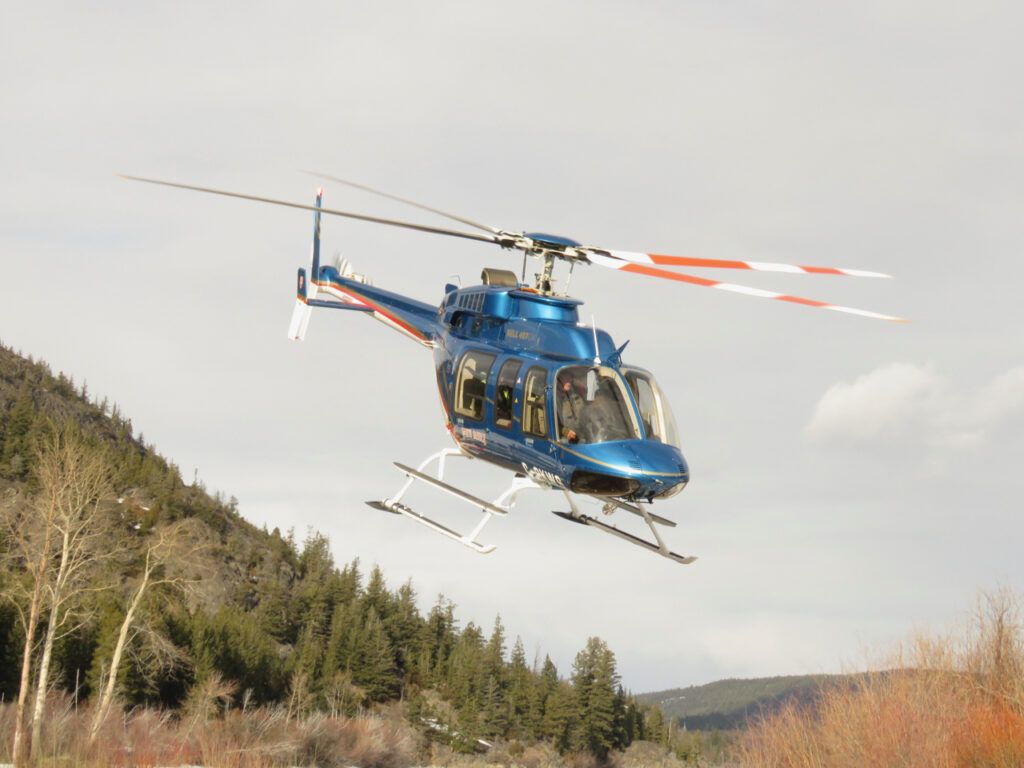
Mike, the pilot, made it look easy. Despite the sometimes gusty wind, he had to keep the chopper steady at a height suitable for people to climb out slowly. Any sudden movement of weight across the aircraft or out of one side would be dangerous. My knees won’t let me climb down slowly so I did not do this exercise. First of all one person climbed carefully down. (Notice the lack of hats – nothing could be worn that might blow into the rotors.)
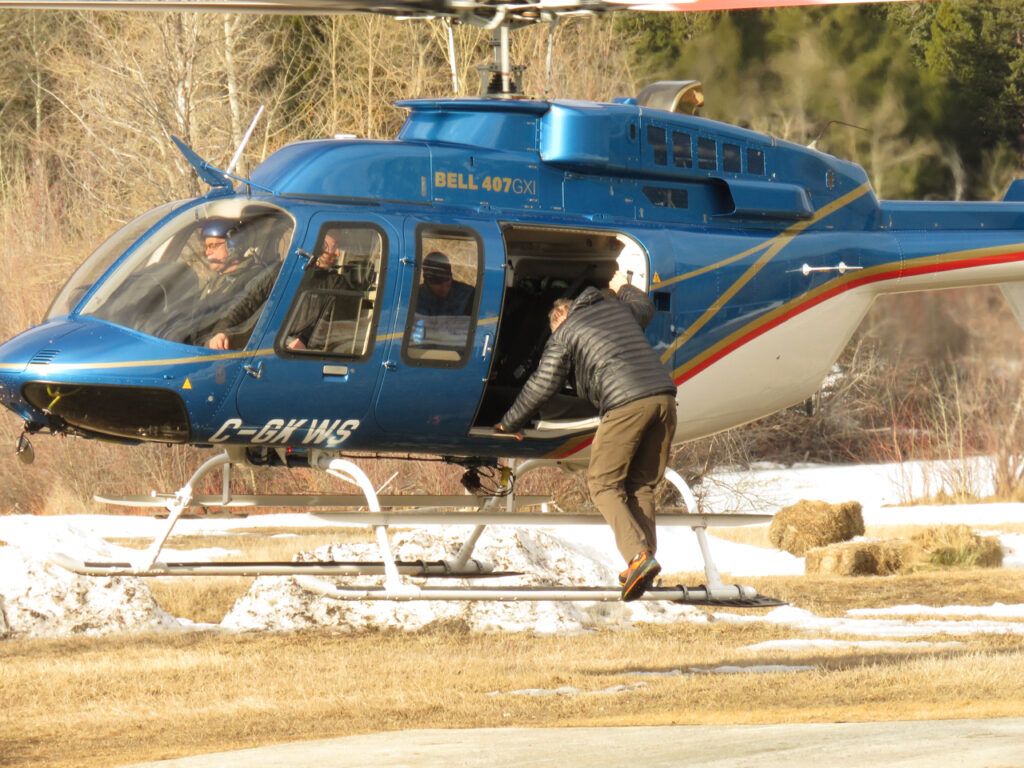
Next, the second person must unstrap and carefully move to the other side of the chopper, strap themselves in, then lower a piece of equipment. A chainsaw is common as the first person out might have to clear a landing pad. This is particularly relevant for firefighting. Finally the second person can unbuckle and exit.
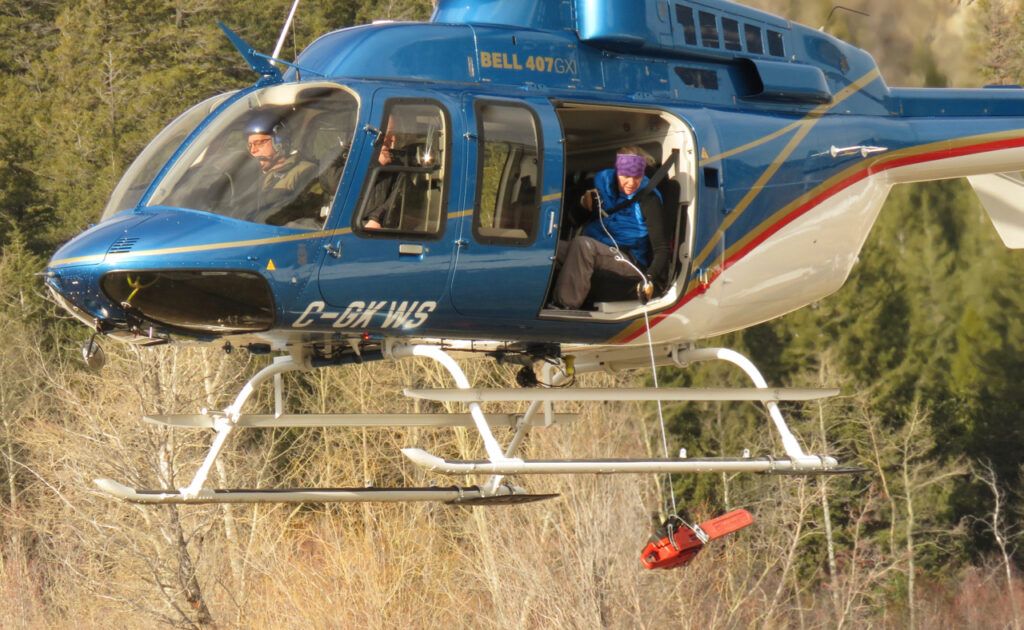
Bluff Lake is lower than my place so a lot of the snow had melted. At home it was still wintry. The trail camera was showing a lot of animal movement, mostly foxes and coyotes, and mostly at night. One night the fuzzy shape of a lynx was evident but the night pictures are very poor. Here is a happy coyote trotting along.
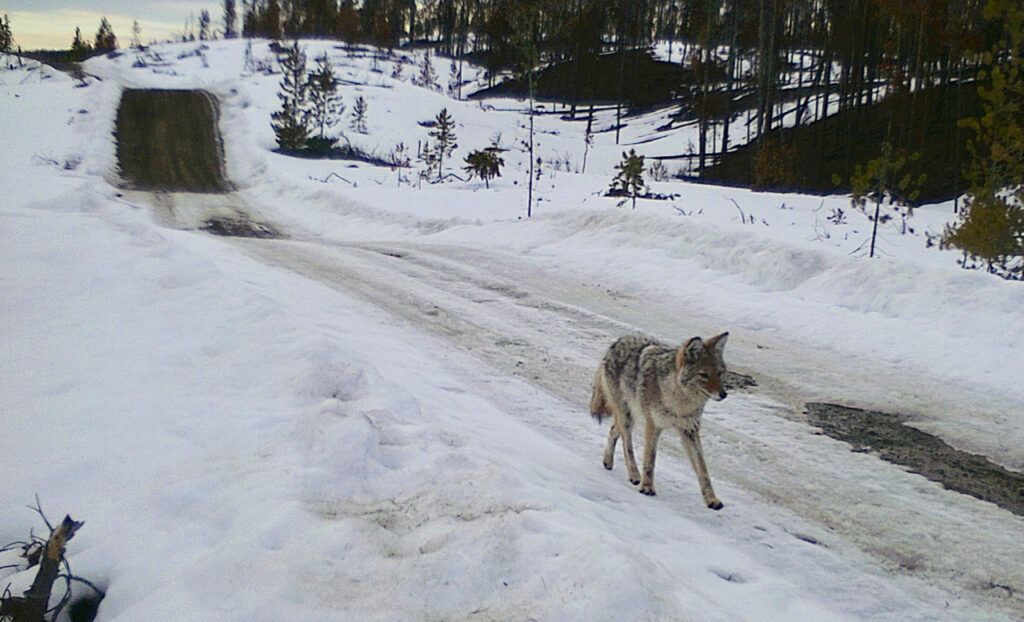
The sun is now setting high up the shoulder of Nogwon. It clears that mountain a couple of days before the Equinox.
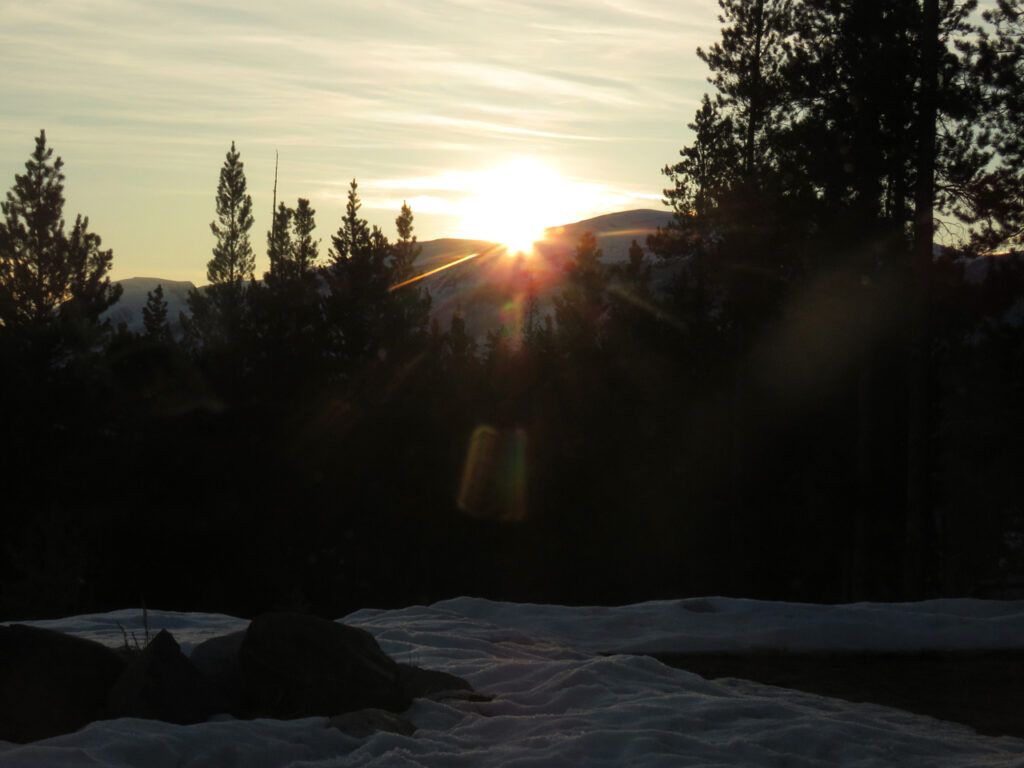
We kept getting little bits of snow.
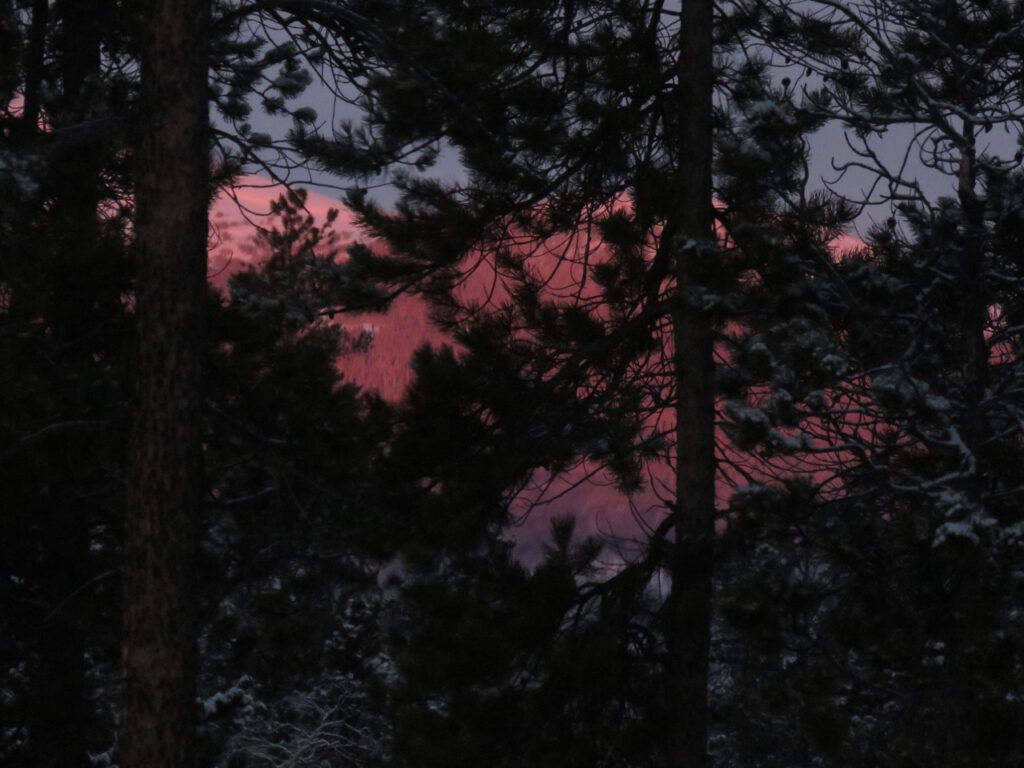
On the 9th March I made my first trip to Williams Lake since mid November. I managed to time the sunrise over the Niuts.
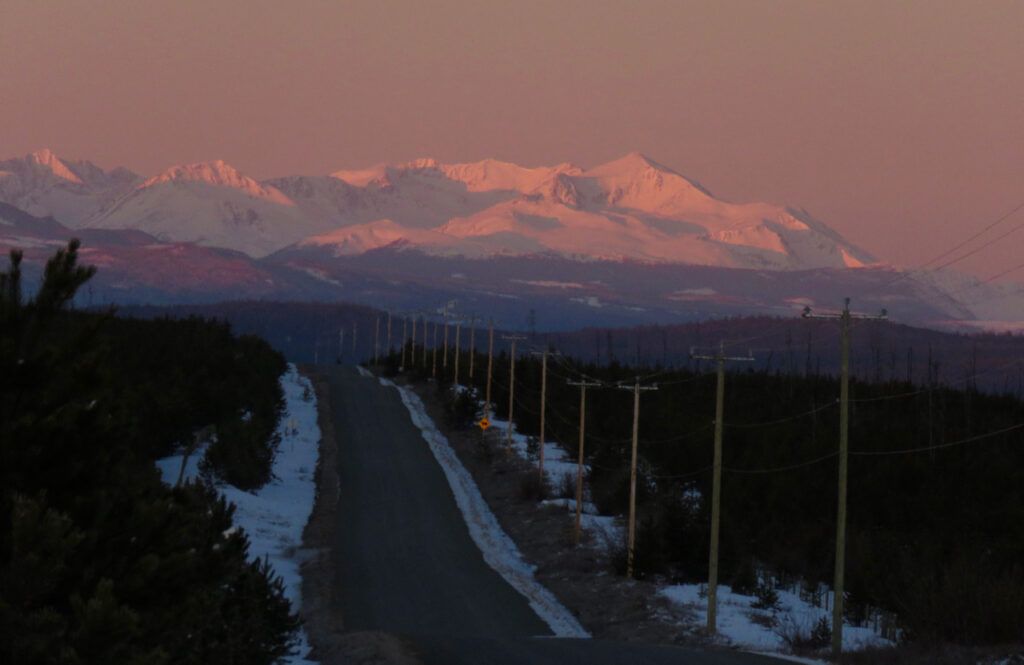
Shortly afterwards, our next SAR course was held – First Aid. I was participating so did not take a lot of photos. Attendance was poor as a lot of people locally had covid.
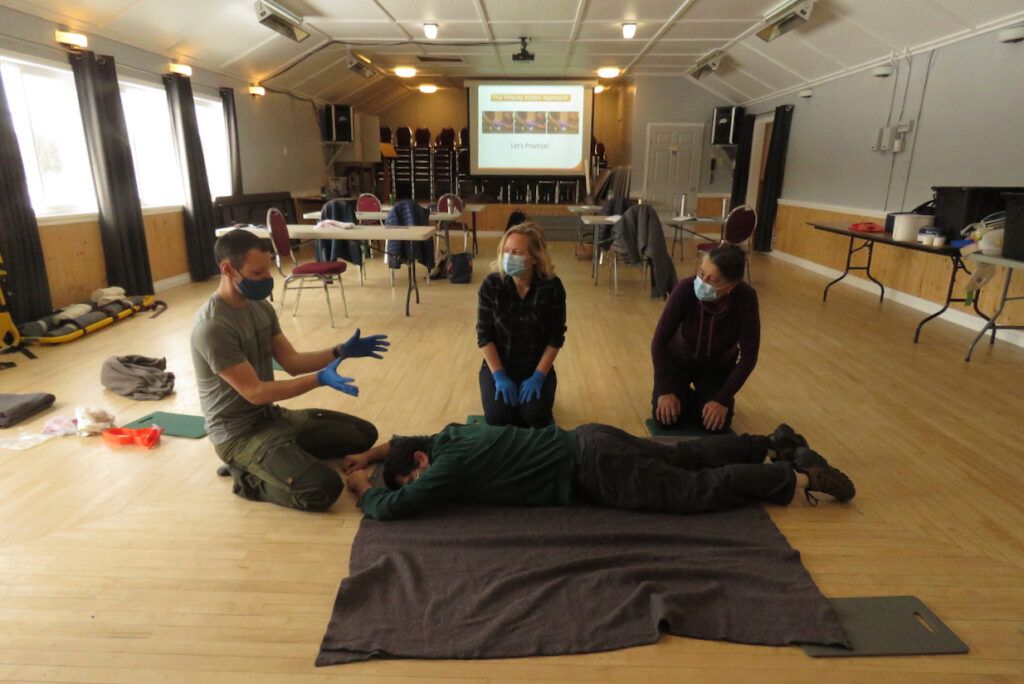
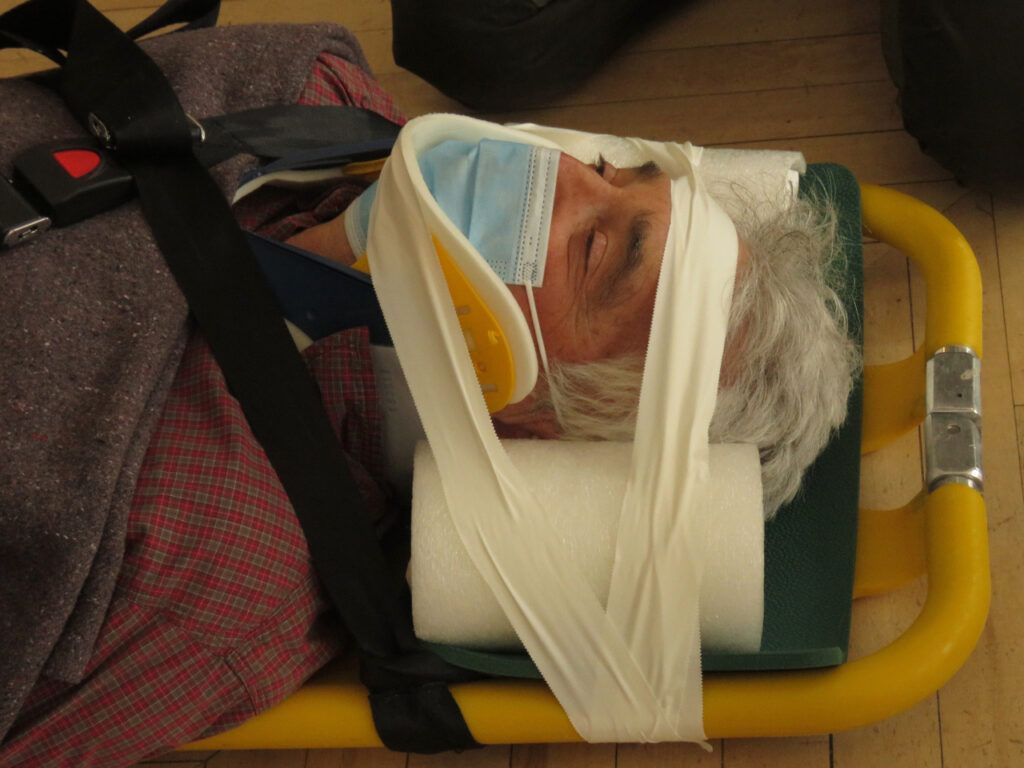
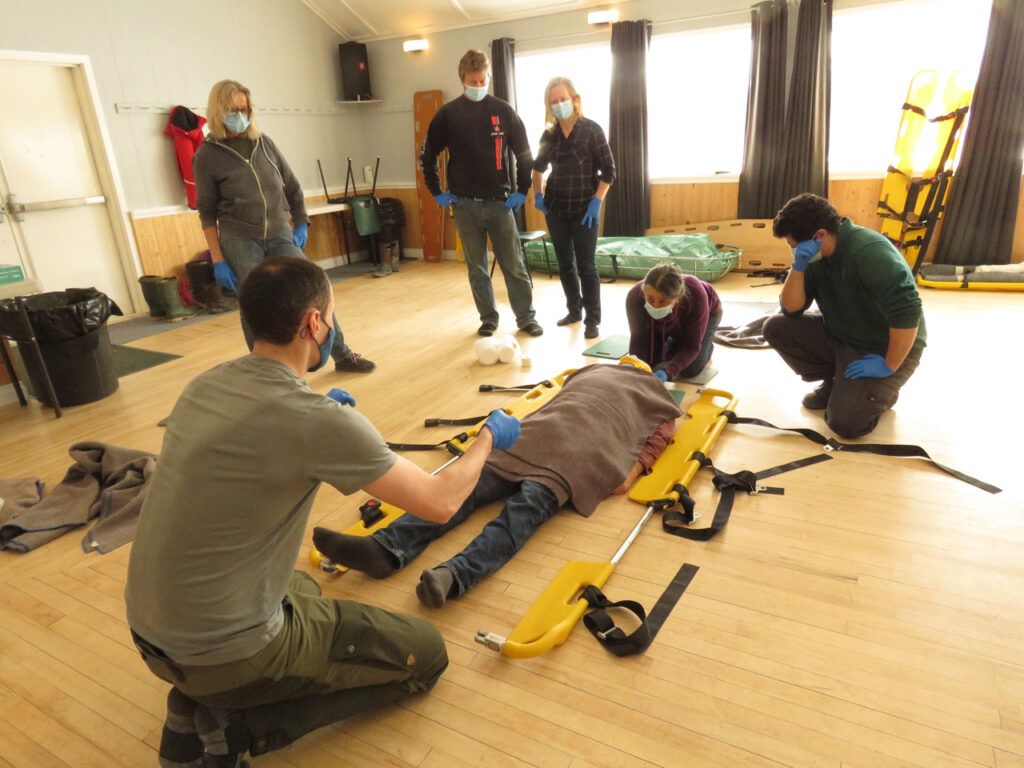
The storms kept coming.
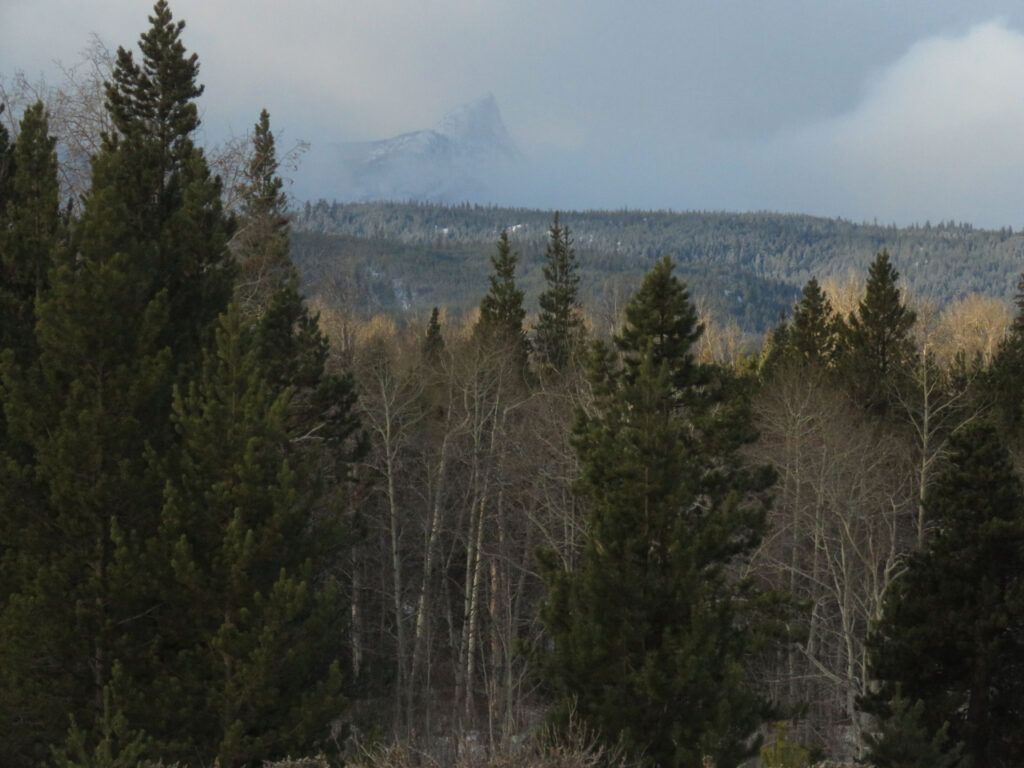
The river was opening up. Those are old moose tracks. Walking is best in the morning now as the snow is firm enough to support me.
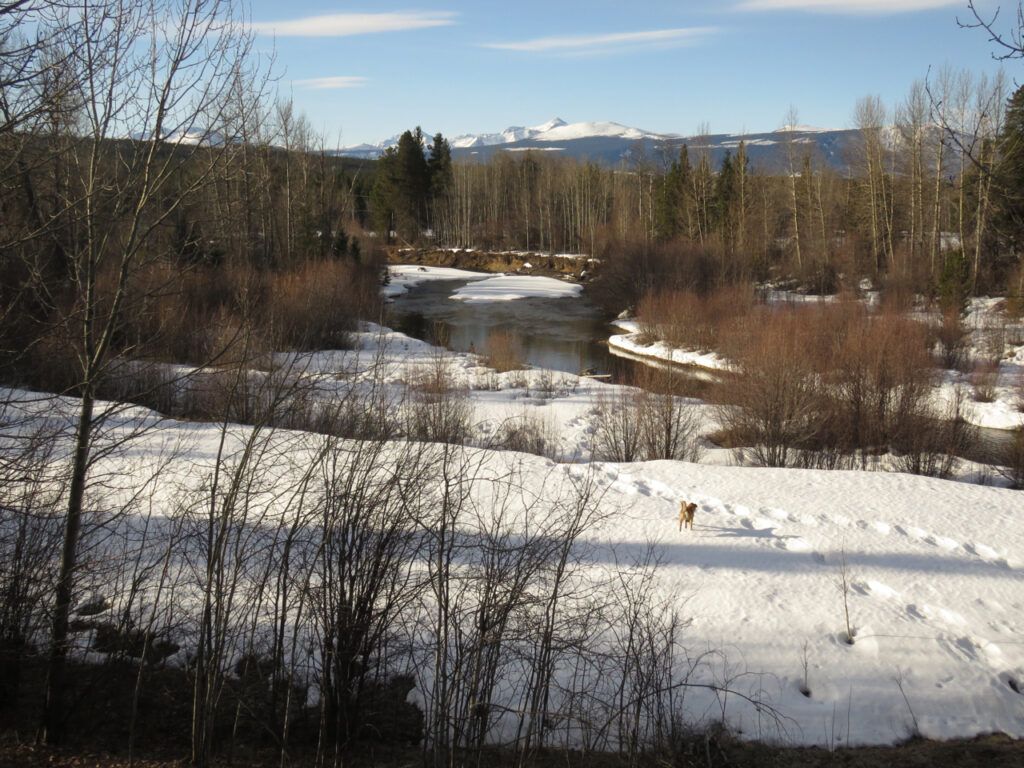
The next SAR course was ice rescue. It had been delayed due to the number of sick people, but all kinds of others in the community were now sick. A lot picked it up in church where vaccinations are sneered at and they spread it around. The man I partnered in the first aid course got it so I am keeping my fingers crossed.
The first day of the ice course looks nice and sunny in the photos , but it was bitterly cold with a very strong wind roaring across the ice. Once again, my knees would not let me participate properly so I went along to take pictures. The rope techniques are also useful in the bush for hauling logs. The trouble with ice rescue is it can never be a quick thing as it takes so long to suit up and get the equipment ready.
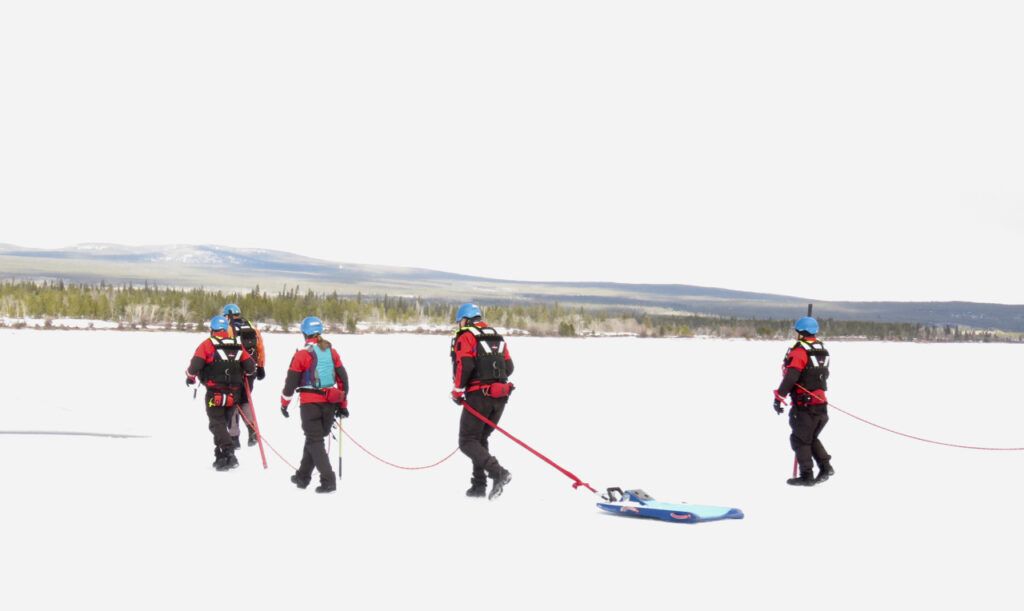
A hole had been cut into the ice the day before. The blocks on the corners show the depth of the ice. The instructor (in orange) had come to us straight from teaching a course in Williams Lake and there the ice was so rotten everyone kept falling in without warning.
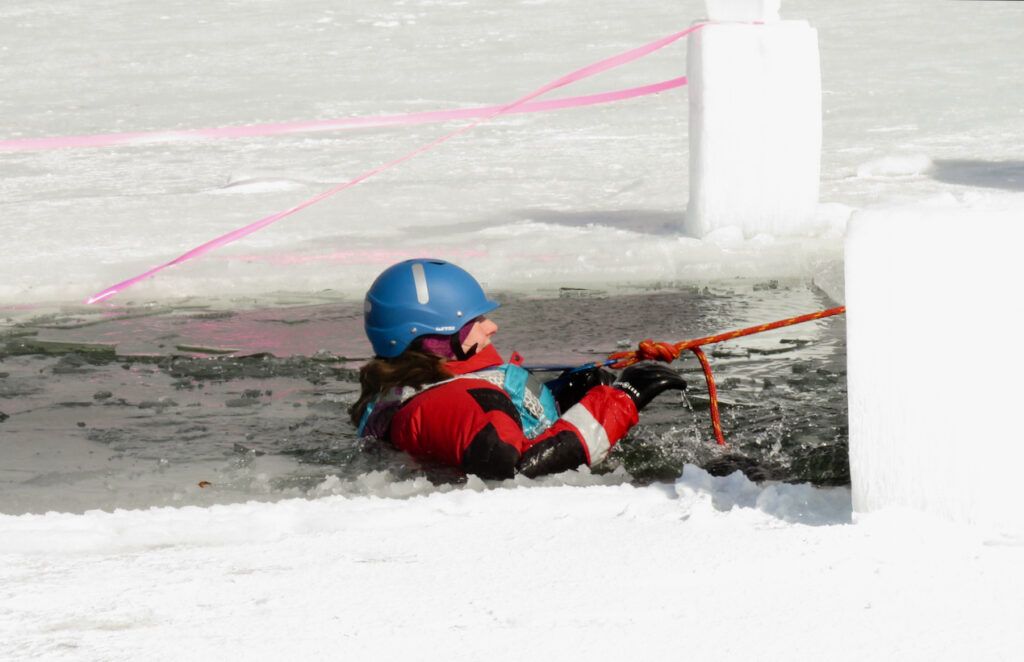
Various methods were used to haul out the “victims.”
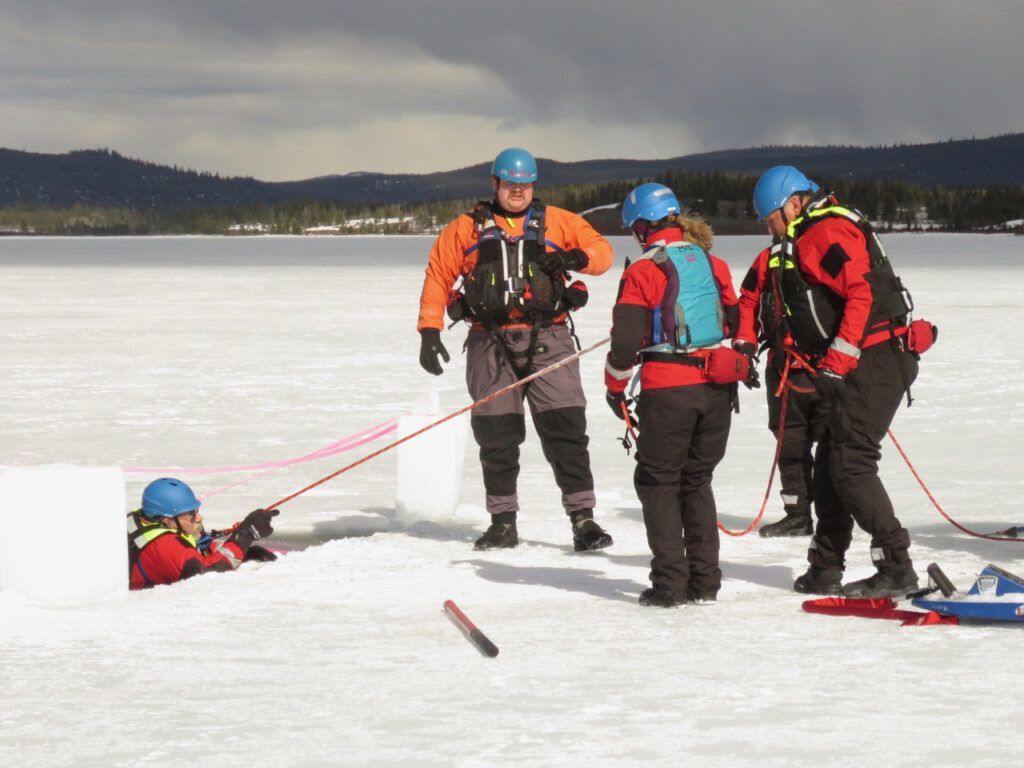
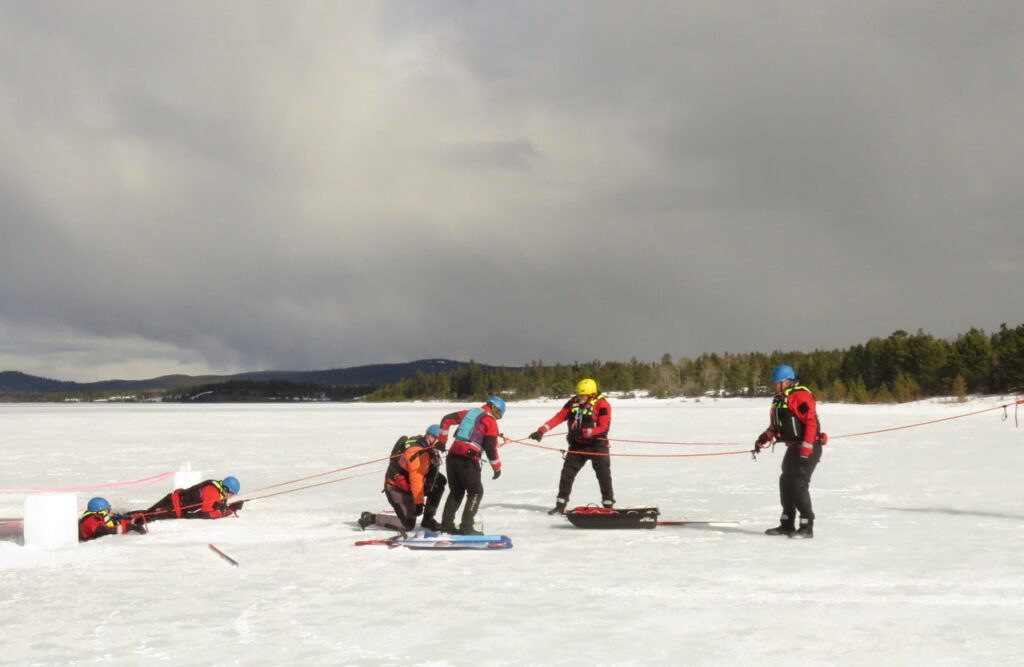
An interesting tool was the banana boat. Looks like a toy from Disneyland. Unfortunately, it also takes a long time to unpack and pump up, but then it is easily deployed. The pictures are self-explanatory.
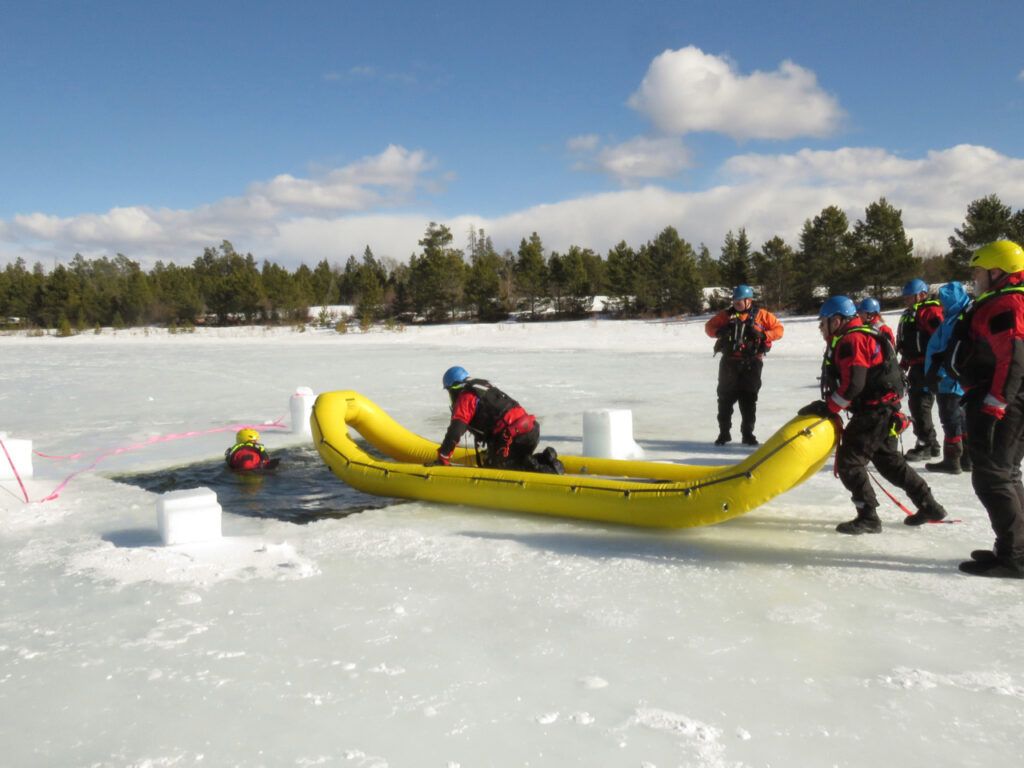
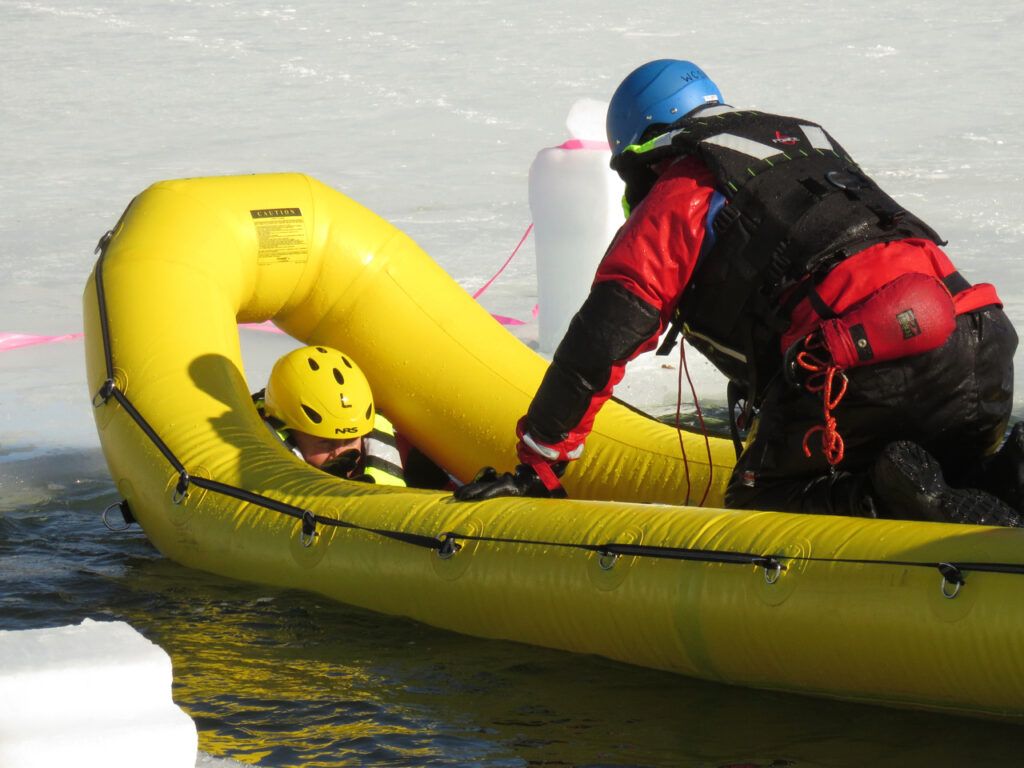
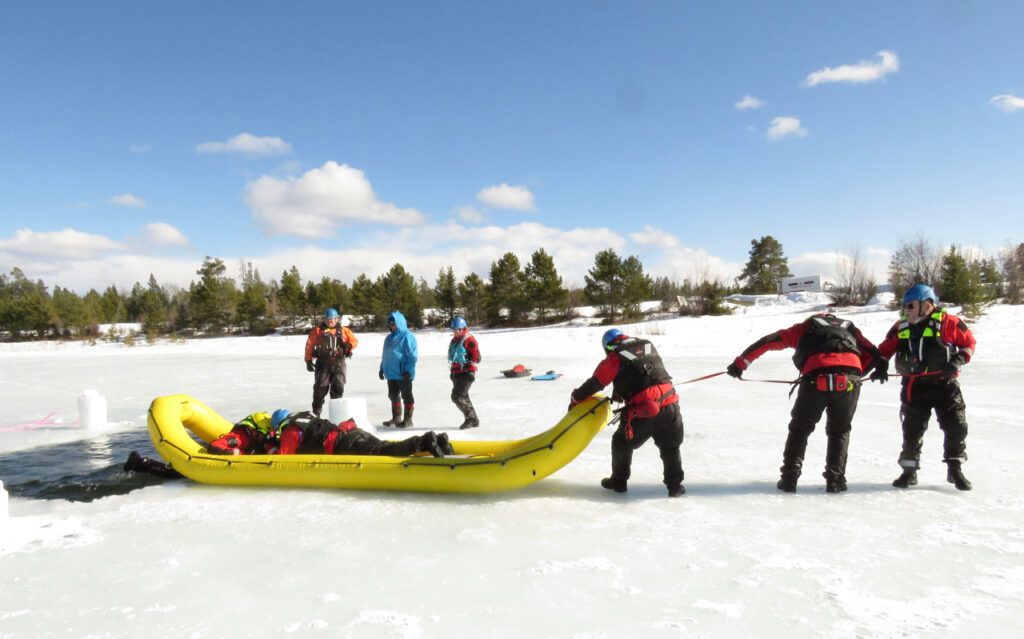
For the second day of the course, yesterday, they wanted to use an ice shelf near a river. Most of the rivers were now wide open – all the ice along the edges was supported by rocks and land. Quiet water was also necessary – swift water requires a whole different level of training. Fortunately, it was not too difficult to reach the outlet of One Eye Lake (named after Chief One Eye) and this provided ideal conditions. The banana boats were paddled up river and I walked through the forest to where I thought I could get a good view.
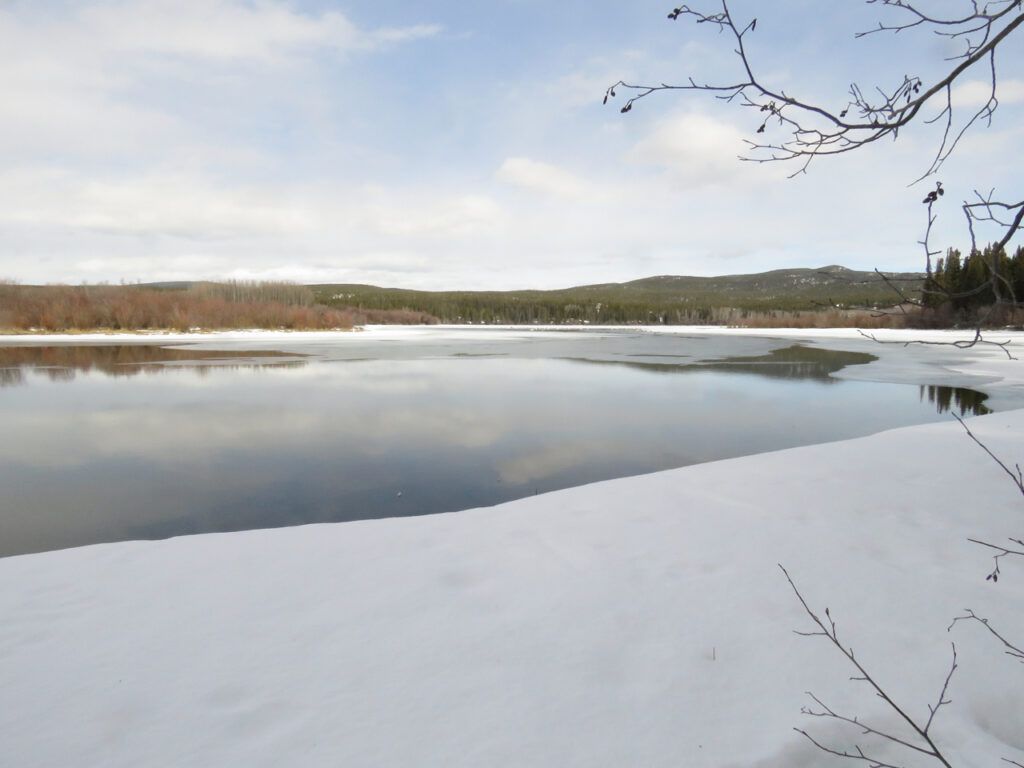
At the far edge of the grey ice were about 150 waterfowl, invisible on this picture, but I could pick them up with the telephoto lens. Mostly geese and trumpeter swans, but there were a few ducks. They didn’t like the banana boats, and they all flew away.
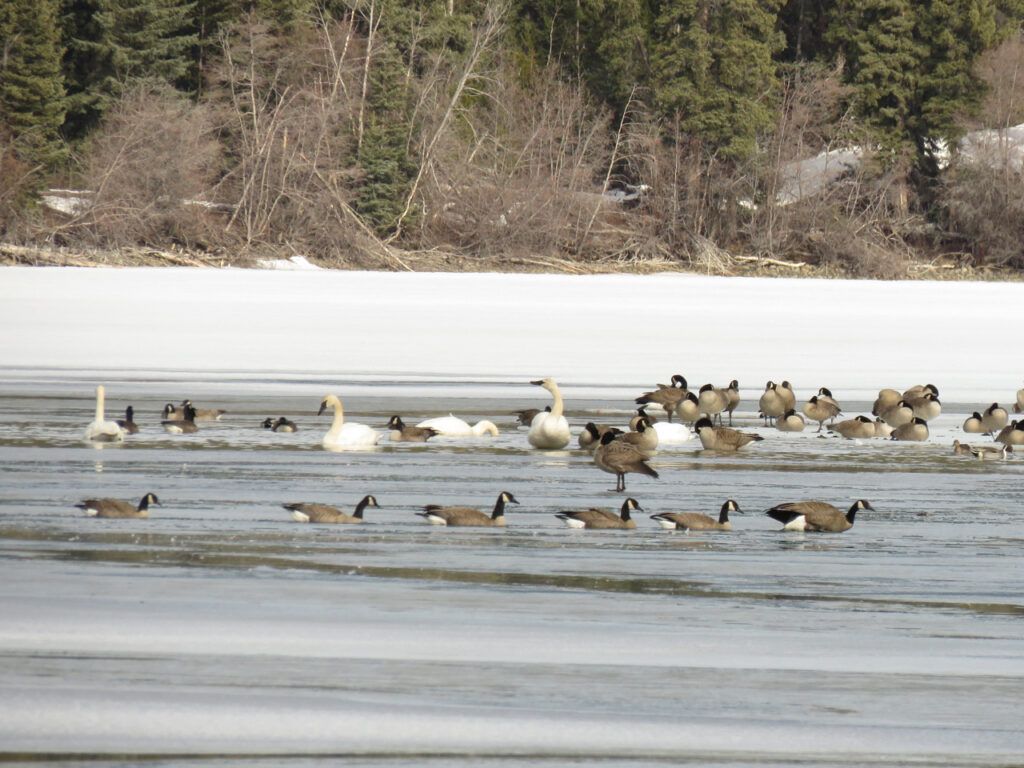
The boats were hauled out onto the ice shelf. It’s amazing how strong old-season ice is.
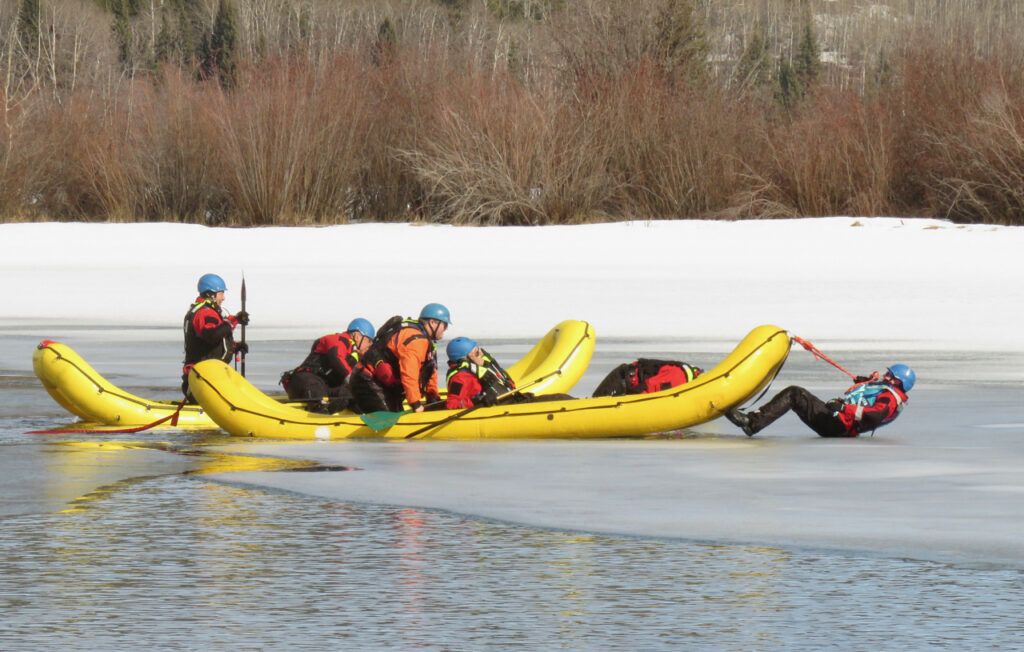
I was expecting to get good photos but apparently this part of the river wasn’t suitable, and they picked the boats up and tramped off into the distance. Too far for me to take anything meaningful.
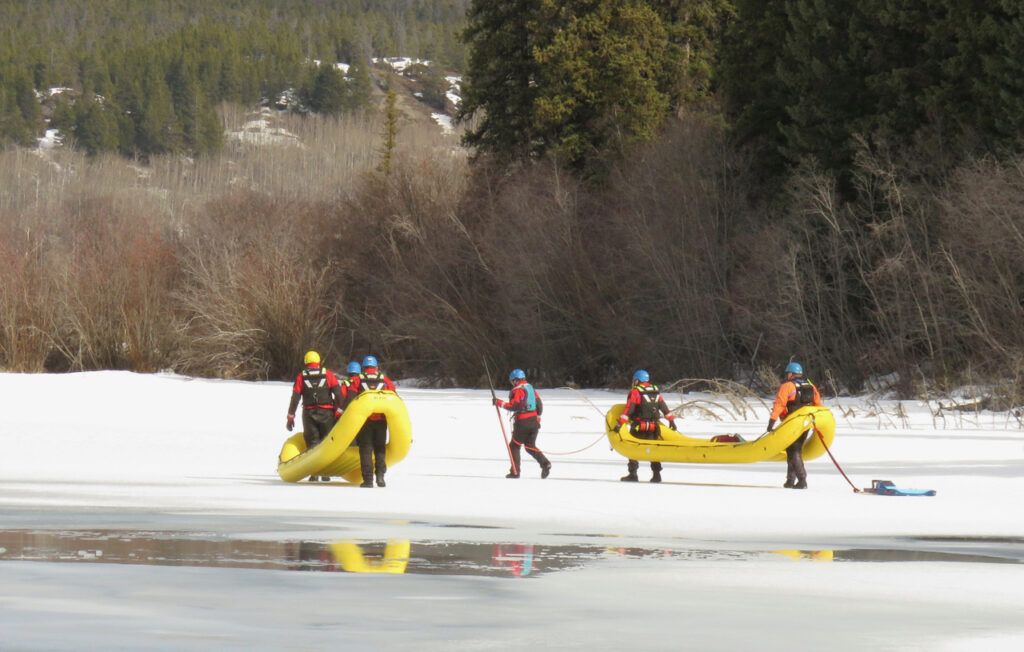
On the first day of the ice course, it snowed in the morning (made for a nice ATV ride to my truck at 7.30:am). Coming home I noticed tracks in the mud and remains of snow. I was delighted to catch these guys on the trail camera.
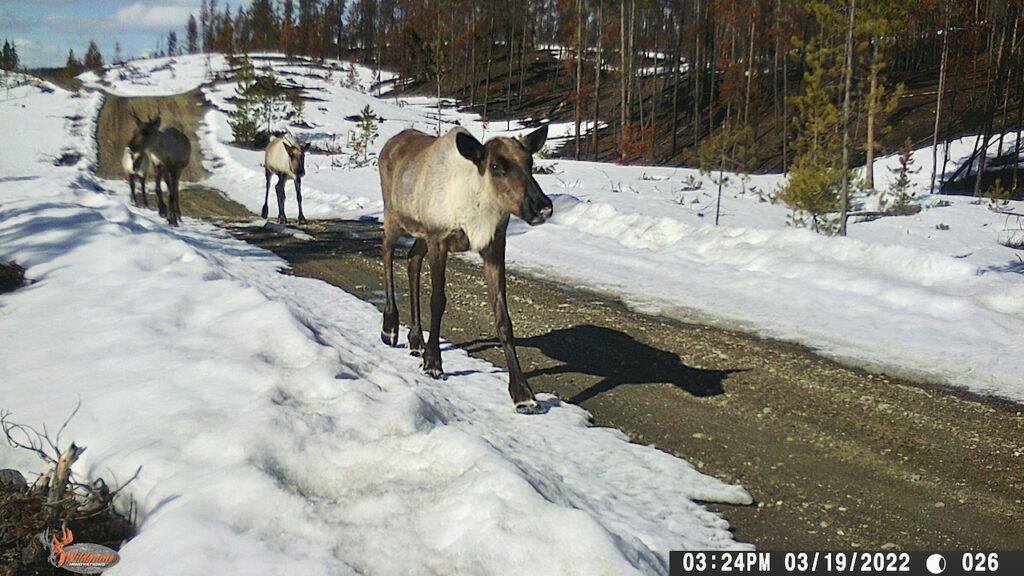
One had a radio collar on. I’ve seen caribou at this time of year before, and one always has a collar. Don’t know if it is the same animal. Collars are supposed to fall off after a year or so.
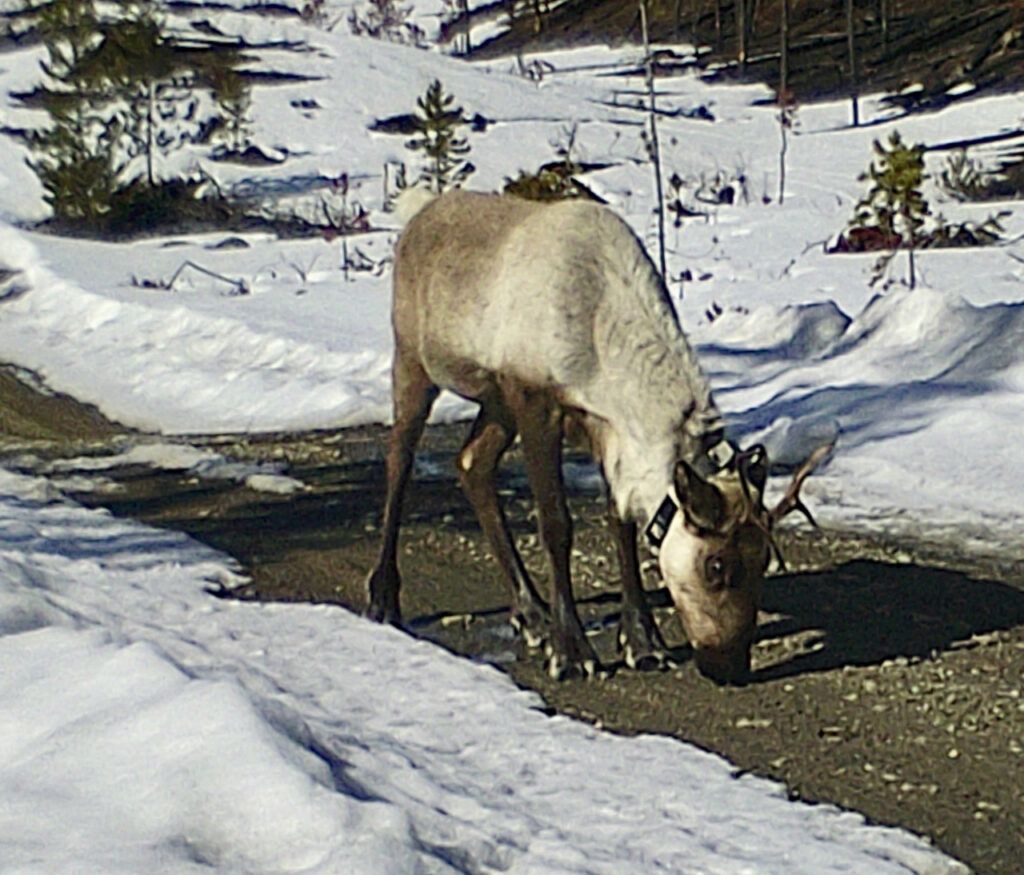
My road is starting to break up. In the forest there is still a lot of ice and puddles, but in the burned area it is clearing off. However, some areas are extremely muddy especially in the afternoon, so that I why I am continuing to use the ATV to get to the truck. But all the fun and games with the road will be described on a future post.
